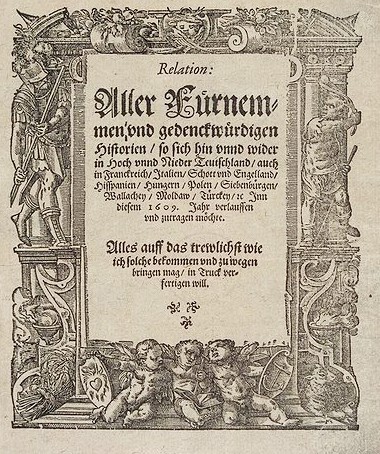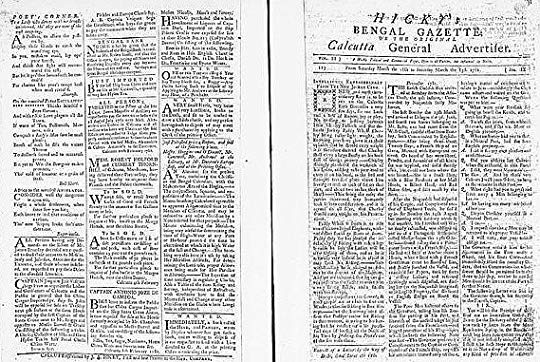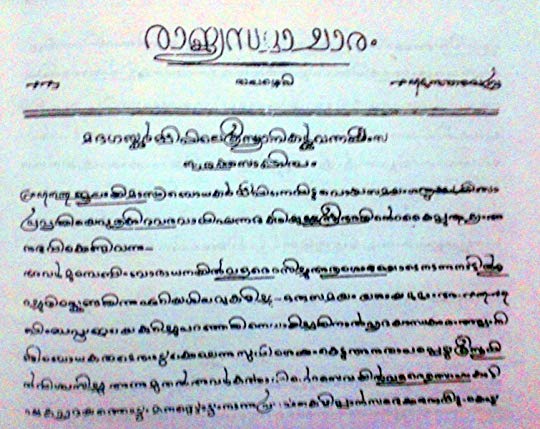‘Rajya Samacharam Oru Patanam’ or ‘Rajya Samacharam – A Study’ by Dr. Vallikkavu Mohandas, is a specialized study on ‘Rajya Samacharam’, which is officially considered as the first newspaper in Malayalam. When the first edition of the newspaper was published in June 1847, it was a tentative first step in the annals of Malayalam journalism, and the path was set for a whole range of newspapers and publications which soon followed and revolutionized the cultural and social fabric of Kerala.
The emergence of printing and the newspaper
With the advent of printing technologies and paper, the way in which human beings archived & distributed information was explosively changed and the contributions by China in this domain is of great importance. A copy of ‘Hiraka Sutra’ or ‘Diamond Sutra’, the first complete surviving printed book, with an inscribed date, which was recovered by Sir Aurel Stein from the ‘Caves of the Thousand Buddhas’ in 1907, is a perfect example of exquisite woodblock printing and its antiquity.

Even though this copy of ‘Hiraka Sutra’ – which is an aphorism of the Mahayana Buddhism – is not a newspaper, it was published for general distribution and can be seen as a trailblazing moment in the history of printing, which paved the way to modern day printed newspapers.
When paper became more broadly available, by the mid 16th century, China, Italy, Germany and then Holland saw the emergence of newsletters with economic, political and military information, which were issued regularly on a weekly basis and circulated among the public. With the spread of the printing press, the mass production of such newsletters or news-sheets became very easy and in 1605, world’s first newspaper emerged from Germany in the form of ‘Relation aller Fürnemmen und gedenckwürdigen Historien’, which was printed in Strasbourg.

This was followed by a flurry of newspaper publications like ‘Corrant out of Italy, Germany, etc’, printed from Amsterdam – the first English language Newspaper – in 1620, ‘Gazette de France’ – first newspaper from France – in 1631 etc…
Christian Missionaries, Printing Press and the first newspapers in India
In India, the printing on paper emerged through Goa; when a ship carrying printing press equipment to Abyssinia from Portugal, in 1556 – for the purpose of helping in the missionary works in Abyssinia – had to cancel the voyage at Goa due to unforeseen circumstances. This press was used in the same year at the Jesuit Saint Paul’s College in Old Goa, marking a new era in the Indian printing scene with an array of books getting printed both in foreign languages and Indian vernaculars. Almost all these publications were meant for missionary purposes.
Even though the technology of the printing press reached India in 1550s, it took another two hundred years and an expelled East India company employee to bring the idea of a full-fledged newspaper in the country. In 1767, William Bolt, a merchant trading with East India Company, raised the idea of setting up a permanent printing press and a newspaper in Calcutta, as he parted with his connections with the Company. The idea was to bring in a platform through which he can criticize the doings of East India Company in Bengal, but this idea met with a setback right in the start as, Bolt was asked to leave India by the company.
This idea put forward by Bolt finally took shape in 1780, when James Augustus Hicky came up with “Hickey’s Bengal Gazette”, which can be seen as the first newspaper in South Asia and was published as a weekly for two years.

This was soon followed by newspapers like India Gazette, Calcutta Gazette, Madras Courier and by 1799 with the “Censorship of Press Act”, by Lord Wellesley, India saw the first censorship laws related to print media.
Dr. Hermann Gundert & Rajya Samacharam, the first Newspaper in Malayalam
Even though Rev. Dr. Hermann Gundert, the German missionary, scholar, and linguist, arrived in Kerala with a primary aim of missionary works for the ‘Basel Mission Society’, he is regarded in esteem for his linguistc studies and contributions to Malayalam language, and for his books on grammar, history, geography and cultural studies. From his litho press at Thalassery, in June, 1847, he published ‘Rajya Samacharam’ – the title can be loosely translated as ‘National News’ or ‘News of the country’ -, with each edition having six/ eight cyclostyled – a form of stencil copying of handwriting – pages. Actually in 1945, he came up with another such printed copy named ‘Malayala Panchangam’, but there is no surviving copy of this to prove its existence, and so ‘Rajya Samacharam’ is officially considered as the first Malayalam newspaper. ‘Rajya Samacharam’, which ran for a total of 42 issues, from 1847 to 1850, was the beginning of the newspaper era in Kerala.
This book ‘Rajya Samacharam Oru Padanam’ is a detailed study of the evolution and the nature of this newspaper and inspects the various forms of content that it carried for this purpose. The newspaper was published in demy octavo size and was printed with out any typefaces, as the content was printed as a duplicating of the handwritten manuscript on paper. There were neither column formatting nor publisher names with in the newspaper. Also there was not any mentions of the cost, so it can be only assumed that the newspaper was distributed free of cost. This makes sense as the majority of the content were related to missionary and preaching efforts.

While presenting the newspaper and its history the book also inspects the cultural impacts it had on the state while analyzing some of the stories or articles with in the newspaper – which are presented usually as letters send by missionaries from across the globe. The newspaper was meant as a tool for spreading the religion and the articles it contained usually revolved around themes like the ‘spread of Christianity around the world’, ‘spiritual benefits of following the faith’ etc. But it also has some sharp reflections on the social evils, like caste system, which prevailed in Kerala during the time of its publication.
One of the major highlights of this book is the reproduction of 40 of the 42 issues of the newspaper presented for the reference of the reader, but if these rare reproductions were done in quality art paper, it would have been more satisfying. ‘Rajya Samacharam Oru Padanam’ published by the Cultural Publications department of Govt of Kerala is a good resource in getting acquainted with the first newspaper in Malayalam and the history leading to its publication.






